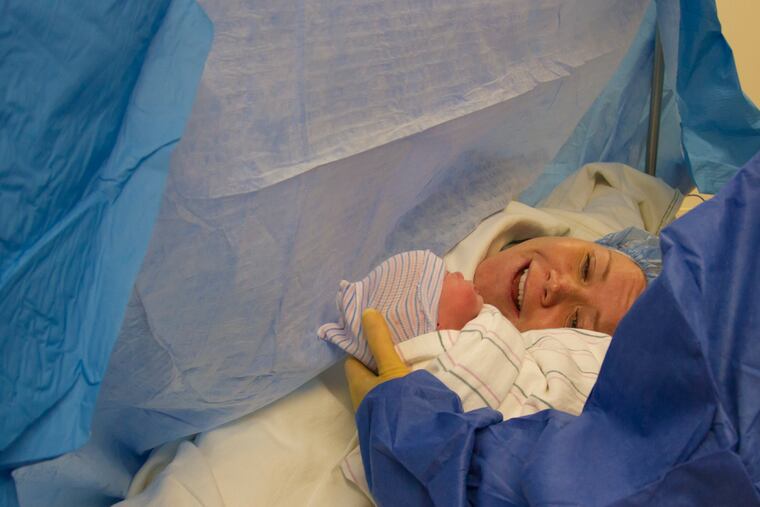Opioids are overprescribed for women who have cesarean deliveries
At current prescribing rates, 3,300 new mothers each year will get hooked on drugs that can harm them and their newborns.

Almost 90% of women who didn’t use opioids in the hospital after a cesarean delivery were sent home with a scrip for the addictive drugs, despite a program to reduce overprescription, according to research conducted at Columbia University Irving Medical Center in New York City.
It’s the latest of many studies showing that, even as the opioid addiction and overdose crisis continues, some prescribers are not heeding advice to use safer painkillers. In August, a national study found opioids are routinely overprescribed even to children who have their tonsils removed.
“We are making progress, but more needs to be done,” said Ruth Landau, Columbia’s director of obstetric anesthesia and leader of the new research. “Women also need to be their own advocates, insisting on opioids only when absolutely necessary. In addition to the risk of addiction, opioids can cross into breast milk and can increase the risk of sleepiness and breathing problems in newborns.”
One study found one in 300 women becomes dependent on opioids after a cesarean delivery. With more than a million cesareans a year in the United States, that means 3,300 new mothers will get hooked on drugs that can harm them and their newborns.
» READ MORE: Many Philly-area doctors earn cash on the side consulting for Big Pharma
The American College of Obstetricians and Gynecologists and other expert groups recommend giving opioids only if cesarean patients don’t get relief from safer painkillers such as acetaminophen and ibuprofen. Prescribers are also supposed to discuss whether patients want to go home with an opioid prescription, rather than automatically giving them one.
But that wasn’t happening at Columbia. So in 2017, under Landau’s leadership, Columbia changed the pain management protocol and the computerized drug ordering system for cesarean patients. Women got scheduled doses of non-opioid painkillers during their three-day hospital stay, but no opioids unless their pain was persistent and serious.
Educational sessions were held to get the medical staff — information techs, pharmacists, and nurses as well as doctors — on board.
By some measures, the program “exceeded our expectations,” said Landau, who presented the findings this week at the annual meeting of the American Society of Anesthesiologists. Nurses adhered to the new protocol 83% of the time. And the percentage of hospitalized women who did not use opioids rose from less than 10% before the program, to 30% in the nine months after the changes — a threefold increase.
But the program did nothing to curb overprescription when women were discharged. Out of 1,500 women, about 30% took no opioids at all in the hospital, yet 89% of them went home with a prescription. Of the 817 women who took no opioids in the 24 hours before discharge, 92% went home with one.
Even though the average prescription dropped from 40 pills to 20 pills, Landau and her coauthors estimated that “there may be up to 15,000 leftover pills in our patients’ homes last year” — stashes that can fuel diversion and misuse.
“I knew discharge was a problem that we would need to address as a third step," Landau said. “We are doing that now. We are working to further educate prescribers to tailor prescriptions.”